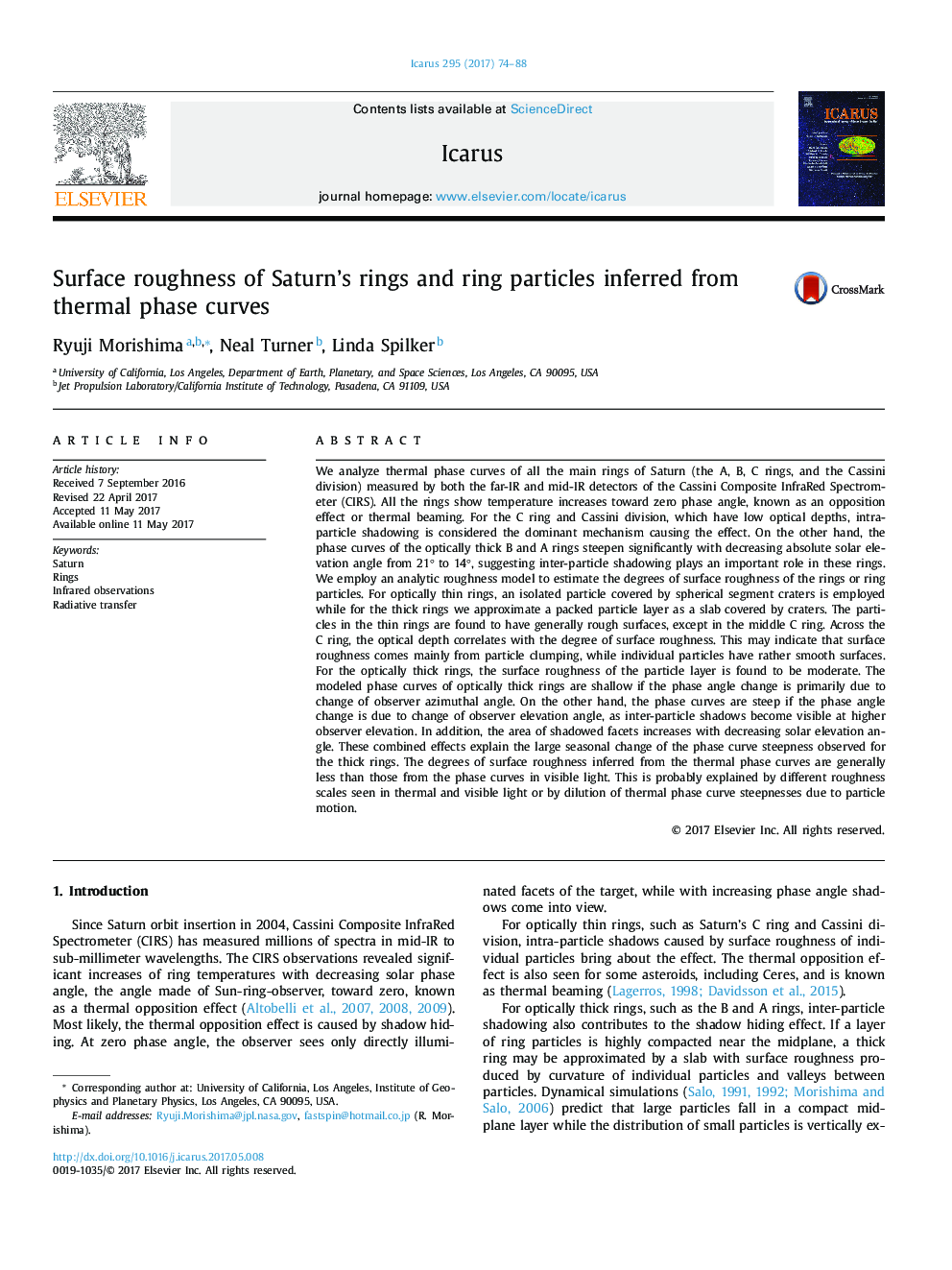| Article ID | Journal | Published Year | Pages | File Type |
|---|---|---|---|---|
| 5487021 | Icarus | 2017 | 15 Pages |
Abstract
We analyze thermal phase curves of all the main rings of Saturn (the A, B, C rings, and the Cassini division) measured by both the far-IR and mid-IR detectors of the Cassini Composite InfraRed Spectrometer (CIRS). All the rings show temperature increases toward zero phase angle, known as an opposition effect or thermal beaming. For the C ring and Cassini division, which have low optical depths, intra-particle shadowing is considered the dominant mechanism causing the effect. On the other hand, the phase curves of the optically thick B and A rings steepen significantly with decreasing absolute solar elevation angle from 21° to 14°, suggesting inter-particle shadowing plays an important role in these rings. We employ an analytic roughness model to estimate the degrees of surface roughness of the rings or ring particles. For optically thin rings, an isolated particle covered by spherical segment craters is employed while for the thick rings we approximate a packed particle layer as a slab covered by craters. The particles in the thin rings are found to have generally rough surfaces, except in the middle C ring. Across the C ring, the optical depth correlates with the degree of surface roughness. This may indicate that surface roughness comes mainly from particle clumping, while individual particles have rather smooth surfaces. For the optically thick rings, the surface roughness of the particle layer is found to be moderate. The modeled phase curves of optically thick rings are shallow if the phase angle change is primarily due to change of observer azimuthal angle. On the other hand, the phase curves are steep if the phase angle change is due to change of observer elevation angle, as inter-particle shadows become visible at higher observer elevation. In addition, the area of shadowed facets increases with decreasing solar elevation angle. These combined effects explain the large seasonal change of the phase curve steepness observed for the thick rings. The degrees of surface roughness inferred from the thermal phase curves are generally less than those from the phase curves in visible light. This is probably explained by different roughness scales seen in thermal and visible light or by dilution of thermal phase curve steepnesses due to particle motion.
Related Topics
Physical Sciences and Engineering
Earth and Planetary Sciences
Space and Planetary Science
Authors
Ryuji Morishima, Neal Turner, Linda Spilker,
